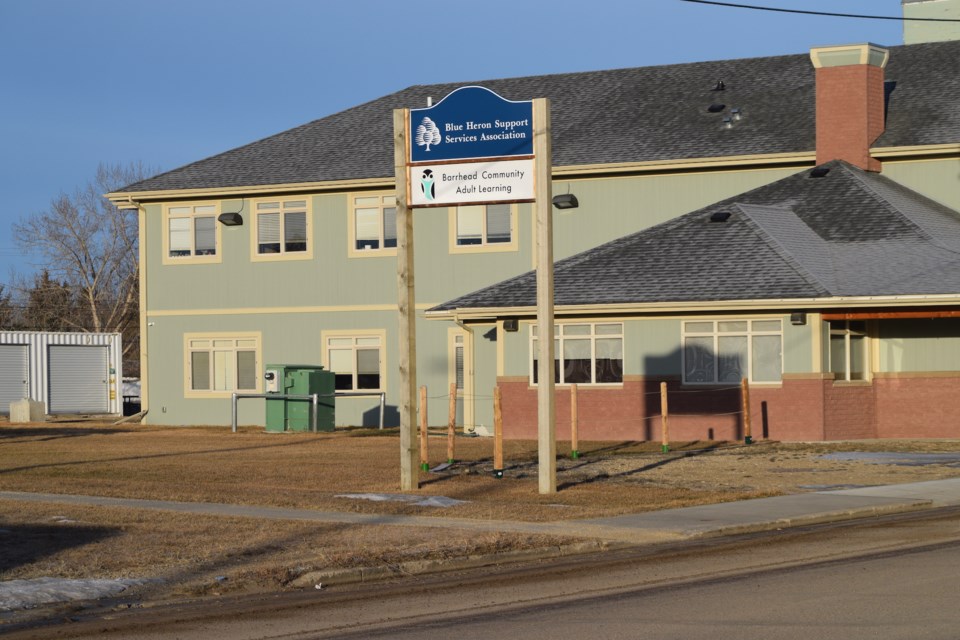BARRHEAD - If the province does not do something soon to increase the wages of community disability service workers, service agencies that support disabled persons in Alberta will not have enough staff to provide the supports their clients need.
"That is already happening," said Alberta Disability Worker Association (ADWA) executive director Sue Manery in a March 16 interview.
The ADWA is the professional association for the province's disability workers. It has been in operation since 2010.
"A lot of businesses and not-for-profit organizations that provide the essential services that people with disabilities require are already facing staffing shortages," she said.
Manery added that a skilled workforce is needed to provide these services and the revolving door of community disability service workers is detrimental to the clients they serve.
She said the reason why the overturn rate is so high for workers is that people are leaving the industry looking for more lucrative employment opportunities.
"Or because of burnout, because they have to take up the slack for the worker shortage, " Manery said.
She added the staffing shortage is most acute outside big cities, as service providers have smaller populations from which to recruit. Nor does she blame workers who have opted to leave the industry looking for greener pastures.
A 2021 workplace survey by the Alberta Council of Disability Services (ACDS), which represents service providers, states there are approximately 15,000 workers employed in community disability services in Alberta, with the average hourly wage being $18.56. When supervisors and management are factored in the average hourly wage increases to $21.50.
In a similar 2020 survey, ACDS states that the workforce shrank by about 1,300 workers, or seven per cent, from Jan. 1 to Oct. 31 of that year. It also stated that the worker turnover rate was 17 per cent.
Manery said the ADWA surveyed its members in January and found that 90 per cent indicated that they were not satisfied with their current wage and that 30 per cent of respondents had to take second jobs to make ends meet.
"It has reached a crisis point. There is no question about it," Manery said. "Something has to happen, and soon. If it doesn't, it is going to impact more and more families and people with disabilities."
As for the solution, the ACDS believes the power to reverse this trend is with the provincial government.
Manery noted that organizations receive the bulk of their funding through service contracts from the Ministry of Community and Social Services.
"There has been no increase in monies since 2014. Even at that time, workers did not make what they should have been," she said, adding that is why the ADWA is calling on the Alberta government to increase community support workers' wages by 25 per cent.
As part of the lobby effort, they are asking for people to join a letter-writing campaign to their MLA, Community and Social Services Minister Jason Luan and his deputy Cynthia Farmer. They should also copy-in the NDP critic for the ministry Marie Renaud.
She said they need to draw attention to the inadequacy of community disability service workers' wages are having on workers and their clients and their families.
"It's a historical thing. The value of the work that we do and the difference the people who are working in disability services make in the lives of Albertans with disabilities doesn't seem to make the government's radar if you take a look at the latest budget," Mannery said.
More information needed
Athabasca-Barrhead-Westlock MLA Glenn van Dijken admitted he did not know enough about the issue to lobby the government on their behalf, inviting the ADWA to contact him directly.
"The first thing that comes to mind is how does the pay structure in Alberta compare with other provinces, jurisdictions, and other fields where workers are performing similar functions," he said. "To justify a 25 per cent wage, it is incumbent for everyone involved to understand if it is fair or not. The best way to understand that is from pay grids of comparable work."
Having said that, van Dijken added that the Alberta government continues to work with industries and sectors on recruitment and retention within their workforces.
"The strategies to do this can be very diverse," he said. "It could be that training or other strategies are needed, but it is incumbent on the association to reach out and have those open discussions ... and I am more than willing to sit down with local representatives to have that dialogue."



